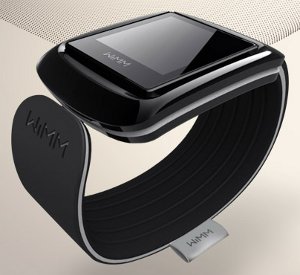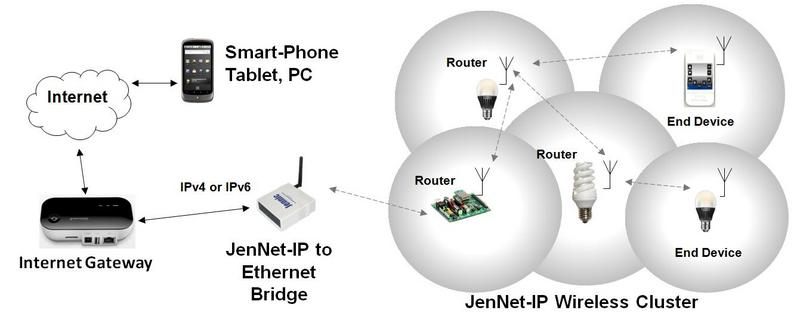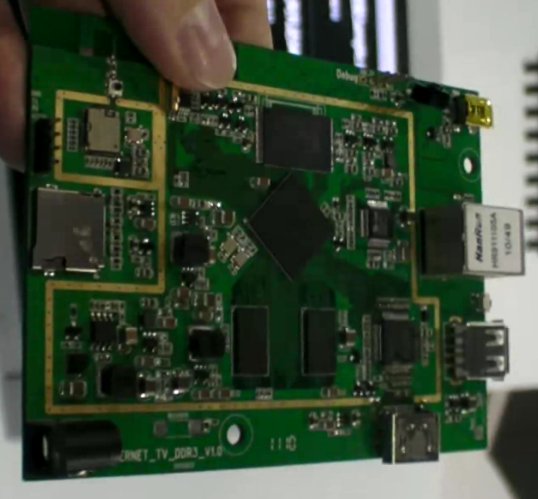Archos Gen9 Android 3.1 Tablets are now available for pre-order on Amazon France. They come in four versions: Archos – 101 G9 – Tablet PC 10″ – OMAP 4 ARM Cortex Dual Core A9 – 250 Go Turbo – Wifi – Android – 399.99 Euros Archos – 101 G9 – Tablet PC 10″ – OMAP 4 ARM Cortex Dual Core A9 – 16 Go Turbo – Wifi – Android – 349.99 Euros Archos – 80 G9 – Tablet PC 8″ – OMAP 4 ARM Cortex Dual Core A9 – 8 Go – Wifi – Android– 249.99 Euros Archos – 80 G9 – Tablet PC 8″ – OMAP 4 ARM Cortex Dual Core A9 – 8 Go Turbo – Wifi – Android – 279.99 Euros If you are not yet familiar with the generation 9 products, have a look at the official Archos G9 presentation video below. There are also a […]
Wearable Android Development Kit
WIMM Labs recently announced a wearable Android-based reference platform and software development kit designed for mobile, sports, health, fashion, finance and consumer electronics applications. The WIMM One platform feature a 1.4″ Bi-modal display, a capacitive touch screen, Wi-Fi, Bluetooth, an accelerometer, a magnetometer, audible and tactile alerts, up to 32GB memory. It is water-resistant, its dimensions are 32×36×12.5mm and it only weights 22g. Wimm Labs also said the device supports GPS in their twitter account. The platform is not currently available, but will be in Q3 2011. The price would be between 200 USD and 2000 USD depending on the licensee according to Wimm Twitter account, with the Wimm One Developer Preview platform closer to the lower end which still makes it a relatively pricey platform. Wimm Labs will also launch a store for applications and accessories later this Fall, where people will be able to find, purchase, and install […]
NXP to release “Internet of Things” source code
Up to now, mainly people were using the Internet, but now things connect to the internet without human beings intervention for data collection (sensors) in order to improve the efficiency of different systems, this is what is called the “Internet of Things”. Watch IBM introduction to the Internet of things if you are not familiar with the concept. NXP recently announced the JenNet-IP software will be available under an open-source licence in Q4 2011. JenNet-IP is an ultra-low-power, IEEE 802.15.4-based wireless connectivity network layer software stack. Key features of the JenNet-IP networking software include: Highly robust, easily scalable, self-healing tree network proven at over 500 nodes Proven in a variety of residential and industrial applications, including asset management, lighting, solar and building control IP-based networking to enable the Internet of Things Gateway or non-gateway options for connection to the Internet or stand-alone operation Easy-to-use, elegant and extensible SNAP object-oriented API […]
Yocto Project: Build Your Own Custom Embedded Kernel Image
The Yocto Project is an open source collaboration project that provides templates, tools and methods to help you create custom Linux-based systems for embedded products regardless of the hardware architecture. The first official release (Yocto Project 1.0) has been made available on the 6th of April 2011. Yocto Project Overview See this short video presentation of the Yocto Project which explains its goals. It’s a complete embedded Linux development environment with tools, metadata, and documentation – everything you need such as emulation environments, debuggers, an Application Toolkit Generator, etc… It is not a new build system however such as buildroot, instead it relies on the Poky build tools that provide an open source development environment targeting the ARM, MIPS, PowerPC and x86 architectures. Here’s what the Yocto Project provides: A recent Linux kernel along with a set of system commands and libraries suitable for the embedded environment. System components such […]
Embedded Linux Quick Start / Tutorial Videos
Free Electrons recorded some videos from the Embedded Linux Conference Europe, in Cambrigde, United Kingdom on October 2010 by Chris Simmonds, the founder of 2net Limited, a UK company providing training, consultancy and custom software for Linux and other embedded platforms. The videos can either be downloaded in webm HD format at http://free-electrons.com/blog/elce-2010-tutorial-videos/ or you can watch them in HD format below. The PDF slides for the three parts and the lab notes are available at http://elinux.org/images/c/cc/Linux-quick-start.tar.gz The first video (53 minutes) deals with the following key points: Genesis of a Linux project The four elements: Tool chain; boot loader; kernel; user space Element 1: Tool chain Element 2: Boot loader The second video (1h19m) focuses on: Third element: Kernel Fourth element: User space The last video (1h07m) is more practical as it shows how to use embedded Linux on an NXP LPC3250 Stick (ARM9): Description of the hardware Installing […]
Rockchip RK2918 based Set-Top Box and Laptop
Rockchip RK2919 is apparently being implemented in many tablets such as Arnova 10, but they are also used in STB / media players and Laptops. Rockchip showcased their set-top box reference design at Hong Kong Electronics Fair 2010. Their board features 100MB Ethernet, one USB host port, one HDMI video output and one SD Card connector. The BOM cost is around 50 USD. The reference designs runs Android 2.3 (gingerbread). They also exhibited a laptop based on RK2918 supposedly manufactured by one of their customers running Android 2.3. There are no details specs nor price information available yet. But with an ARM Cortex A8 running at 1.2Ghz it should offer decent performance compared to existing ARM based laptops although I’d rather have Ubuntu preloaded (now optimized by Linaro) than Android on this kind of device. Here’s a video by Charbax (armdevices.net) of this laptop. Jean-Luc Aufranc (CNXSoft)Jean-Luc started CNX Software […]
RK2918 based Arnova 10 Tablet with Capacitive Touchscreen
Arnova, a subsidiary of Archos in Hong Kong, has already released the resistive touchscreen version of Arnova 10 based on Android 2.1 and powered by Rockchip RK2918 in March 2011. In May, they will start to sell the latest version of Arnova 10 with capacitive touchscreen and Android 2.3 (Gingerbread). The price should only be slightly higher then the first Arnova 10 with a retail price of 229 USD / 229 Euro. This device is very similar to Archos 101 except it has a more powerful processor (Rockchip RK2918 vs. OMAP 3) but it does not have kickstand and surprisingly no HDMI output. Watch the hands-on video by Charbax below. Jean-Luc Aufranc (CNXSoft)Jean-Luc started CNX Software in 2010 as a part-time endeavor, before quitting his job as a software engineering manager, and starting to write daily news, and reviews full time later in 2011. www.cnx-software.com
Android 2.3.3 Firmware for HTC, Motorola, ZTE, Samsung smartphones
CyanogenMod is an aftermarket firmware for a number of cell phones and tablets based on the open-source Android operating system. It offers features not found in the official Android based firmwares of vendors of these cell phones. People often use it because the official firmware of their phone may not get an update or because they do not like the custom Android UI of the manufacturer. The latest version is CyanogenMod 7 (11th of April 2011) with the following: Android version: 2.3.3 Kernel 2.6.37.4 with CFS (Completely Fair Scheduler) Root access BusyBox tools Apps2SD Reboot menu – options to perform a reboot, reboot into recovery, or reboot into bootloader Input settings – Haptic feedback adjustments, trackball wake, menu unlock, music controls on lock screen Performance settings – surface dithering, JIT, VM heap size, and lock messaging in memory CyanogenMod 7 also offers user interface improvement, some pre-install apps, networking support (OpenVPN, tethering, etc..), audio […]









